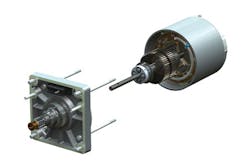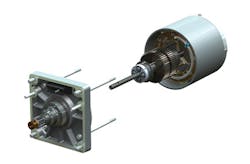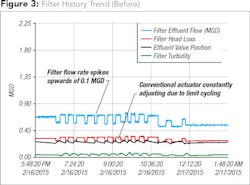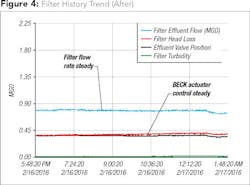Impact of Improved Actuation on Filter Performance
By Gene Fry, Jay Tannan and Joshua Bromley
The City of East Moline (Ill.) Water Filtration Treatment Plant purifies water from the Mississippi River and supplies drinking water to city residents. Plant personnel are constantly working to improve processes in an effort to exceed stringent state and federal regulations. The plant removes particulate matter from the river water using eight mixed-media, rapid gravity filters.
When East Moline’s filter plant was built in 1950, pneumatic actuators were installed on all of the filter control valves. However, the pneumatic actuators were not always reliable. Air compressor problems limited the availability of the pneumatics to control the filter valves. As a result of the instrument air problems, the pneumatic actuators were replaced in 2003 with conventional electric actuators on the filter control valves throughout the facility.
Many water treatment plants use conventional electric actuators because they are widely available and commonly supplied as part of bigger systems. Unfortunately, conventional electric actuator designs use high-speed induction motors as the driving force. These motors have inherent characteristics that can lead to problems, especially in modulating service typical of many filter valves. The two biggest problems are thermal limitations due to high in-rush currents and coast due to the high motor speeds and inertia. These problems increase as the activity level of the actuator increases and also as the need for accurate control increases. Managing these problems becomes a trade-off between control performance and motor reliability, eventually leading to poor control, failed motors or both.
The conventional actuators controlling the filter effluent valves at East Moline’s plant were not immune to these problems. In fact, plant personnel increased the actuator deadbands to limit motor starts and hopefully minimize motor failures. However, increasing deadband reduced the actuator’s positioning resolution, causing limit cycling of the actuator and process. The limit cycling caused fluctuations in filter head and cyclical flow rate spikes. The resulting filter instability also caused cyclical spikes in turbidity.
Turbidity is “a suspension of fine particles that obscures light rays” - basically a measure of water clarity (see Fig. 1). As turbidity increases, water quality and appeal decrease. Highly turbid water - water with greater than 0.5 Nephelometric Turbidity Units (NTU) - must be redirected via a filter-to-waste system which, in the case of East Moline, sends the water to a holding tank in a separate building. The water is later sent back to the plant for retreatment. This process costs time and money
To correct the actuator-induced problems at East Moline, plant personnel trialed a BECK electric actuator to control filter effluent. Unlike conventional electric actuators, BECK electric actuators use permanent magnet motors coupled to a unique high-efficiency gear train. This design is capable of high resolution and true 100 percent continuous modulating control. BECK’s unique motor design (see Fig. 2) gives BECK actuators the reliability and precise control necessary for critical control valve applications.
After several months of performance testing at the plant, the improved control performance of the BECK actuator stabilized filter flow control and eliminated the actuator motor and filter maintenance problems the plant normally experienced. As expected, turbidity control was also greatly improved. The flow rate characteristics are illustrated on the before (see Fig. 3) and after (see Fig. 4) charts for the conventional electric actuator and new BECK electric actuator, respectively.
The positive results experienced at the City of East Moline plant have led to additional BECK actuator purchases. The expectation is that by 2017, all filter effluent control valves will be replaced with BECK actuators, further improving turbidity control, increasing process reliability and reducing actuator and filter maintenance problems.
About the Authors: Gene Fry is the maintenance manager for the City of East Moline water filtration plant. He has over twenty years of experience in the water filtration and distribution industry. Jay Tannan is a sales application engineer for Harold Beck & Sons Inc. (Newtown, Pa.) with fifteen years of experience working in various process industries. He holds a bachelor’s degree in chemical engineering from the University of Wisconsin - Madison. Joshua Bromley is an inside sales engineer for Harold Beck & Sons. He has twelve years of experience supporting customers in process industries and holds a bachelor’s degree in chemical engineering from the University of Pittsburgh. To learn more, visit www.haroldbeck.com




